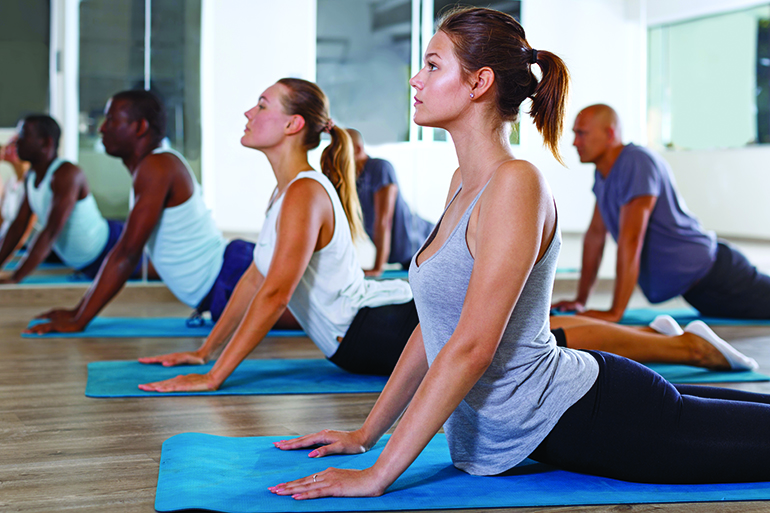GinaJi of AyurYogaTantraSpa on Awakening Your Inner Self with Yoga

GinaJi, owner of AyurYogaTantraSpa, talks about the importance of yoga in helping unlock the inner self.
How is yoga healing for the body?
Well, I could write a book on how yoga is not only healing to the body, but also so many other aspects of ourselves, seen and unseen. Mental, physical, emotional, energetic, spiritual and sexual! Please note that yogic sex and spirit are a sacred, personal journey of exploration, treated with great respect.
For me, at first, yoga was about healing chronic back pain. I discovered it had so much more to offer, as well as the obvious musculoskeletal system benefits. Yoga is healing to our mind, emotions, energy, vitality, immune function, digestion, elimination, cardiopulmonary activity, nervous system and endocrine system, meaning hormonal balance and sexual health. Yoga can even alkalize blood, calm the heart rate, balance blood pressure, slow biological aging and more!
When it comes to healing the physical body with yoga, beginners are primarily attracted to yoga’s ability to improve mobility, flexibility, balance, strength and breathing through regular practice of postures, called “asanas.”
When it comes to deeper healing, what sets yoga apart from just stretching or other western exercise is the attention to the breath and specifically various forms of breath work called “pranayama” and various forms or relaxation, visualization and mediation to purify and rejuvenate all aspects of the mind and body.
Over time, these practices work synchronistically with our brain chemistry, activity, response and something called an “energy body,” along with energy pathways and energy centers, which are believed to be influential and superior to the physical body, inviting higher states of awareness, consciousness and long-term healing transformation. I call this “Magical Multidimensional Mind Body Medicine!”
How does yoga contribute to an active lifestyle?
Choosing yoga based on an “active lifestyle” is a personal choice. In other words, one size doesn’t fit all. If the active lifestyle is heavy on active, then consider whether or not you desire an active yoga style to meet that energy and disperse it, or a passive yoga style to calm it down.
All classical yoga classes include centering, breathing, physical practice with breathing and a short or long period of relaxation and/or mediation. Short or physically based active yoga classes sometimes abbreviate or completely omit centering, breathing, relaxation and meditation.
Let this choice be influenced by your intention, goals, activity level, physical desires and physical abilities, knowing that these change with age, season, lifestyle responsibilities and schedule. Yoga, having many styles and lineages in the U.S., is easily a standalone form of healthy exercise. It’s also a fantastic complement to any active lifestyle or any exercise program.
How can someone find the best type of yoga for their body and lifestyle?
I ask my students and clients to be curious. Visit websites, read descriptions, have a short conversation with teachers at the studio, sample different studios, different teachers and different classes.
Note that a beginner yoga class could be for active beginners. It’s for this reason I offer All Levels Friendly yoga classes. If you have been injured, ill, in any kind of recovery, inactive, feel deconditioned, lack strength, flexibility, stamina endurance or have chronic pain or stress, then you may want to try something slower, softer, gentler. Consider Chair Yoga, Gentle Yoga, a First Timer Yoga Series or private yoga session.
Private sessions are an excellent way to prepare for any type of yoga, including beginner yoga. An experienced instructor can address any health or life concern, goal or interest.
Why is yoga such a beloved practice?
More than just physical, yoga is beloved because it helps us feel good inside and out, a higher vibe, aligning head and heart, which is sometimes referred to as the “seat of the soul.”
The meaning of “yoga” is “yoke” or “union” of the mind and body with spirit. Spirit is personally defined by the student. What does spirit mean to you? Spirit could mean many things, such as life force energy, soul, nature, infinite self, higher self, intuitive self.
Rather than only being in our heads, yoga gradually rekindles the mind-body connection, self-connection, self-acceptance and self love. Yoga fosters self-empowerment, enabling us to navigate our lives with more compassion, faith and grace.
Yoga helps us remember, honor, expand, sense and feel our true authentic self or our inner light that shines even brighter, helping us to acknowledge the shine of others. This is why we say “Namaste” at the end of each class. Namaste: “The highest and best in me to the highest and best in you,” or “The light in me honors the light in you!”
Learn more about AyurYogaTantraSpa at ayuryogatantraspa.com. Mention this article for a free 30-minute consultation.



